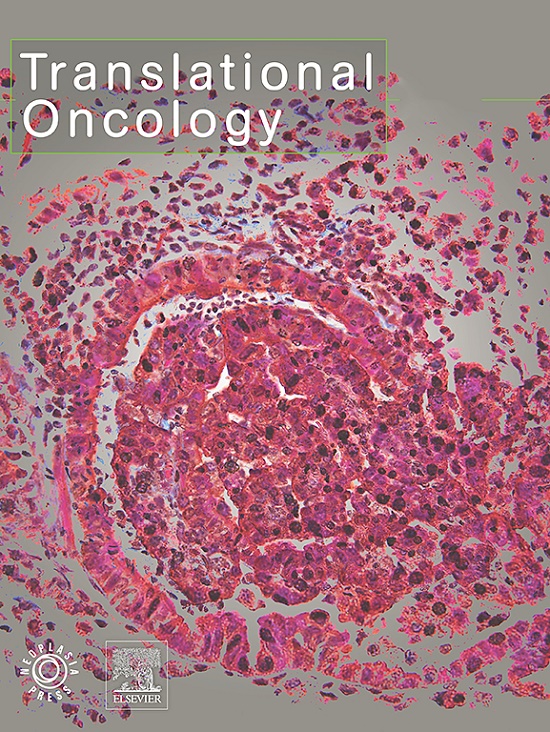采用新辅助化放疗治疗不同盆腔分区受累的T4b直肠癌的预后比较及对完善现行T分期系统的意义:回顾性队列研究
IF 5
2区 医学
Q2 Medicine
引用次数: 0
摘要
目的T4b直肠癌虽然被归为一个阶段,但实际上代表了一组异质性疾病。我们的研究旨在评估T4b直肠癌累及下盆腔和其他盆腔室的预后差异。这些信息可能有助于改进当前的T分期系统。方法回顾性分析2010年1月至2019年12月期间接受新辅助放化疗的195例局部晚期T4b直肠癌患者的数据。104例患者仅受累于下盆腔室(A组),91例患者受累于前、后或外侧盆腔室(B组)。比较两组的短期和长期结果。结果经新辅助治疗后,A组80.8%(84/104)患者行手术,B组92.3%(84/91)患者行手术。R0切除率分别为97.6%和89.3%。A组8.7%(9/104)患者临床完全缓解,采用观察等待策略。A组患者的5年无进展生存期(PFS) (67.8% vs. 55.5%, P = 0.032)和总生存期(OS) (86.6% vs. 71.8%, P = 0.001)显著优于b组。多变量Cox回归分析还发现盆腔室受损伤分类是PFS(风险比1.776,P = 0.046)和OS(风险比3.477,P = 0.004)的独立预测因子。结论局限于下盆腔室的t4b直肠癌预后优于其他盆腔室。这些差异应进一步研究,并在改进当前的T分期系统时加以考虑。本文章由计算机程序翻译,如有差异,请以英文原文为准。
Comparison of prognosis for T4b rectal cancer with different pelvic compartment involvement treated using neoadjuvant chemoradiotherapy and implications for refinement of the current T staging system: A retrospective cohort study
Purpose
Although classified as one stage, T4b rectal cancer actually represents a group of heterogeneous diseases. Our study aimed to assess the prognosis difference of T4b rectal cancer involving inferior pelvic and other pelvic compartments. This information may be helpful in refinement of the current T staging system.
Methods
We retrospectively analysed data from 195 patients with magnetic resonance imaging-identified locally advanced T4b rectal cancer who received neoadjuvant chemoradiotherapy between January 2010 and December 2019. 104 patients had only inferior pelvic compartment involvement (group A) while 91 patients had anterior, posterior or lateral pelvic compartment involvement (group B). Short-term and long-term outcomes were compared between the two groups.
Results
After neoadjuvant therapy, 80.8 % patients (84/104) in group A and 92.3 % patients (84/91) in group B underwent surgery. The R0 resection rates were 97.6 % and 89.3 %, respectively. 8.7 % patients (9/104) in group A achieved clinical complete response and adopted watch-and-wait strategy. Patients in group A had significantly superior 5-year progression-free survival (PFS) (67.8 % vs. 55.5 %, P = 0.032) and overall survival (OS) (89.6 % vs. 71.8 %, P = 0.001) than group B. Multivariable Cox regression analysis also identified pelvic compartment involvement classification as an independent predictor of PFS (hazard ratio 1.776, P = 0.046) and OS (hazard ratio 3.477, P = 0.004).
Conclusion
T4b rectal cancers with involvement limited to the inferior pelvic compartment had superior prognosis compared to those involving other pelvic compartments. These differences should be investigated further and taken into consideration in refinement of the current T staging system.
求助全文
通过发布文献求助,成功后即可免费获取论文全文。
去求助
来源期刊

Translational Oncology
ONCOLOGY-
CiteScore
8.40
自引率
2.00%
发文量
314
审稿时长
54 days
期刊介绍:
Translational Oncology publishes the results of novel research investigations which bridge the laboratory and clinical settings including risk assessment, cellular and molecular characterization, prevention, detection, diagnosis and treatment of human cancers with the overall goal of improving the clinical care of oncology patients. Translational Oncology will publish laboratory studies of novel therapeutic interventions as well as clinical trials which evaluate new treatment paradigms for cancer. Peer reviewed manuscript types include Original Reports, Reviews and Editorials.
 求助内容:
求助内容: 应助结果提醒方式:
应助结果提醒方式:


